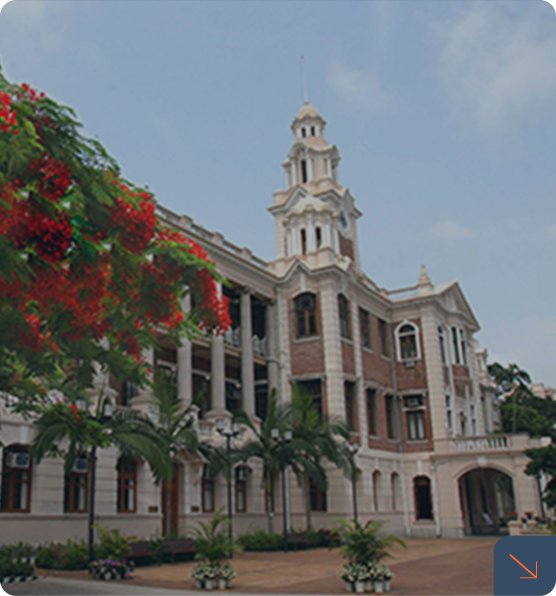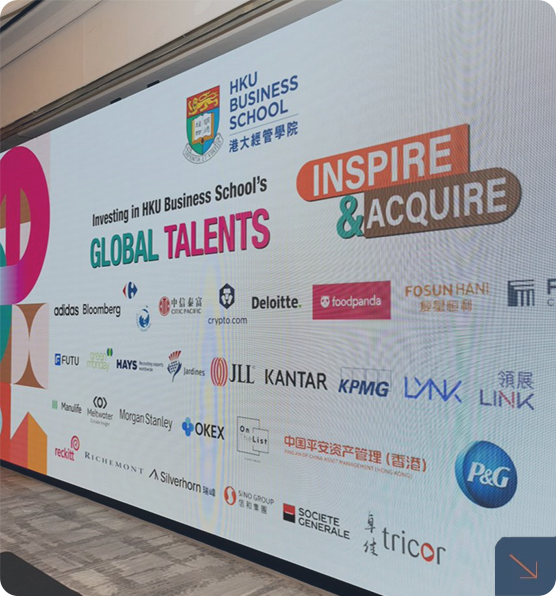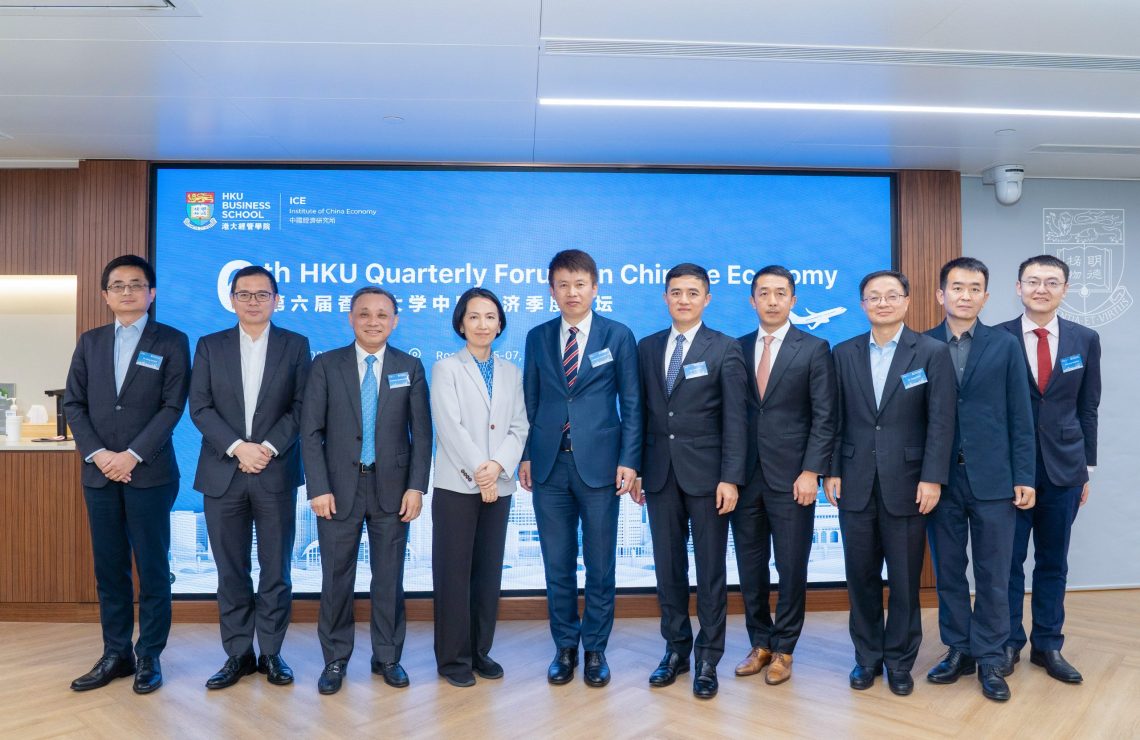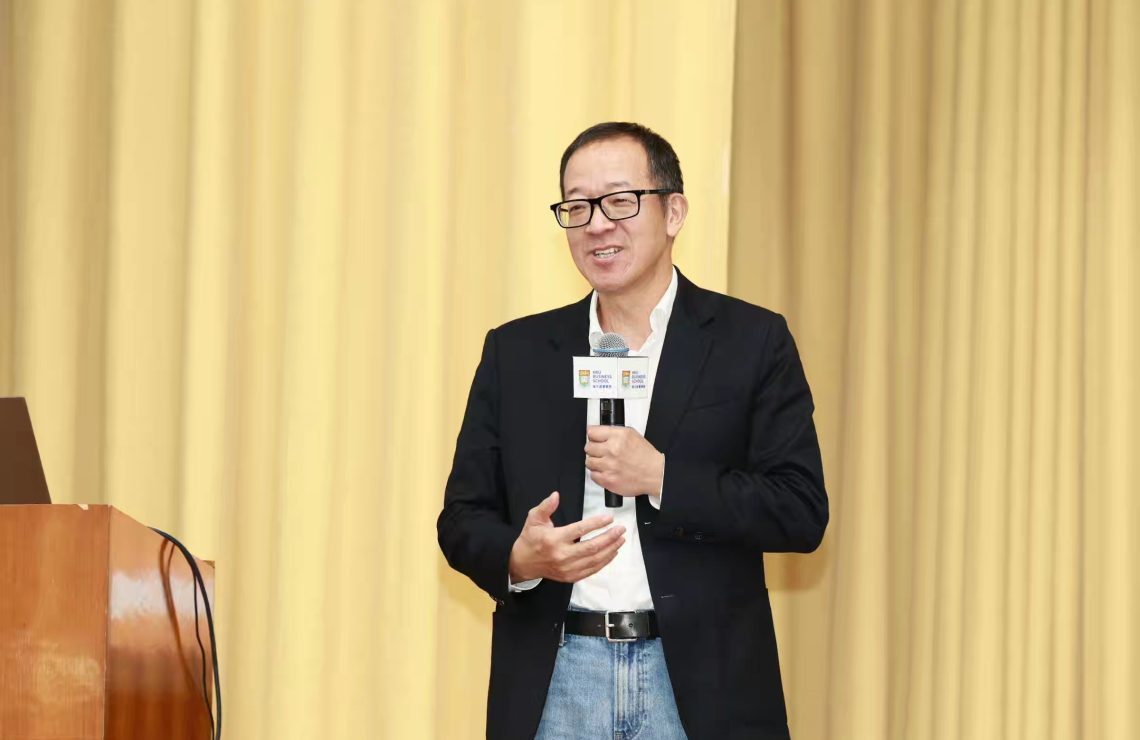Retrospective: The Eighth Asian Historical Economics Conference (AHEC 2024)
Ever wondered about the lasting effects of social disasters on stock market participation or the impact of cultural traits during crises? How have extraordinary natural occurrences influenced executive orders or how has female education shaped historical economic trajectories? These research inquiries were among those explored at the Eighth Asian Historical Economics Conference (AHEC 2024), organised by the Asian Historical Economics Society and hosted by the Centre for Quantitative History (CQH) of HKU Business School, in collaboration with the Hong Kong Institute for the Humanities and Social Sciences and the International Society for Quantitative History.
Held on December 9-10, the conference brought together more than 170 attendees, comprising leading economic historians, economists, other academics, young researchers and students working on the economic history of all regions of Asia, as well as those comparing Asia with other regions. This marked HKU’s second hosting effort. In contrast to the 2018 conference, this edition was held on the HKU campus. Spearheaded by Professors Zhiwu Chen, Stephen Broadberry, Kyoji Fukao, Bishnupriya Gupta, Duol Kim, Chicheng Ma, Debin Ma and Şevket Pamuk, the two-day conference showcased remarkable submissions in both quantity and quality, representing a diverse range of regions. With a total of 134 submissions, the number nearly doubled compared to AHEC 2018. Out of the shortlisted submission, roughly half of them were full papers. The accepted papers covered various regions of study, with a significant portion focusing on China (around 45%), followed by East Asia (13%), Southeast Asia (11%), Europe/Eurasia (9%), South Asia (8%), Asia-Pacific (7%), West Asia/Near East (4%), and Global and others (4%). The event highlighted the growing interest and participation in quantitative historical research, with a diverse array of research topics and contributors from around the world, making AHEC 2024 a successful and enriching academic gathering.
Professor Zhiwu Chen, Chair of the AHEC 2024 Organising Committee as well as Director of the Centre for Quantitative History, said quantitative history was a growing field. “We have put together a decent-sized group of economic historians and quantitative historians and archaeologists and in three, or five, years’ time our group will be even bigger,” he said in opening the event.
At this year’s conference, distinguished keynote speakers, including Professors Sascha O. Becker from the University of Warwick and Monash University, Peter Turchin from the Complexity Science Hub and the University of Connecticut, and Joel Mokyr from Northwestern University, were joined by a plenary panel of journal editors. The panel includes Sascha O. Becker himself, along with Bishnupriya Gupta, Kris Inwood, and Uta Schönberg. These distinguished speakers explored a wide array of historical economic themes, shedding light on pivotal moments and trends shaping the Asian economic landscape.
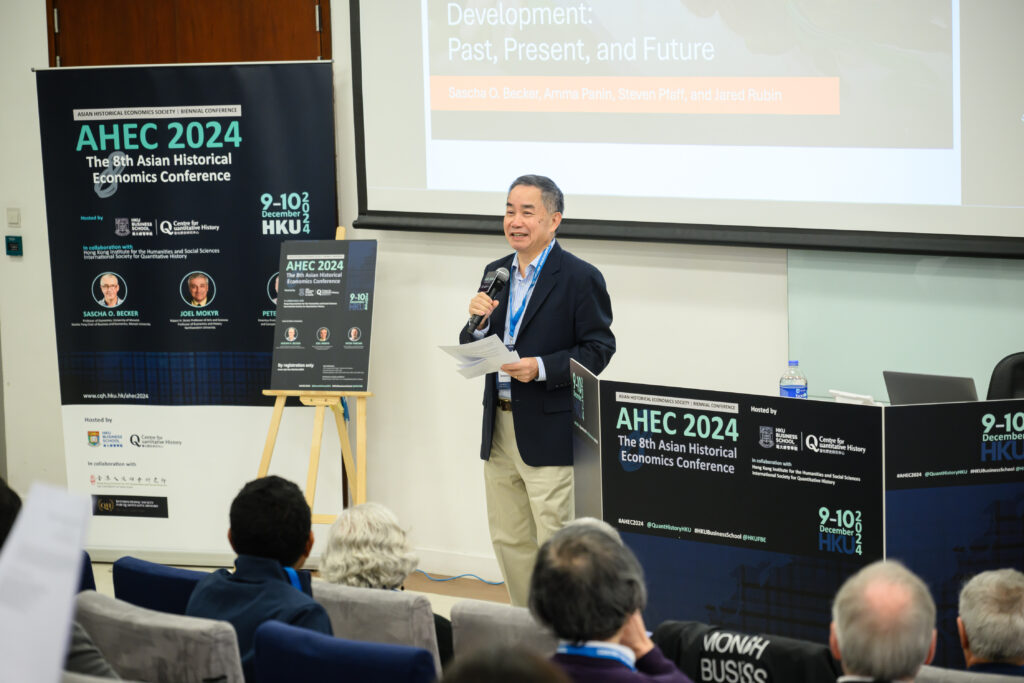
We have put together a decent-sized group of economic historians and quantitative historians and archaeologists and in three, or five, years’ time our group will be even bigger.
The first day of AHEC 2024 opened with a keynote speech by Professor Sascha O. Becker in which he argued that religion exerts more influence on economic development than previously thought. He highlighted the evolving perceptions regarding the historical trajectory of religious beliefs, debunking the notion of a continuous decline in religiosity over time. He acknowledged that while there was a huge variation in religious importance across countries, beliefs remained a significant influence globally. “The persistent influence of religion shapes socio-economic outcomes even with low religiosity.”
Professor Becker also challenged a hypothesis that as a society becomes richer and more educated, religion declines and loses its influence. “There has been very little [academic] work on religious revivals,” he said, citing instances in both Christianity and Islam. “[Former Brazilian President Jair] Bolsonaro came to power partly on the rise of Pentecostalism.”
Then resurgence of Roman Catholicism in Poland after the fall of the Soviet Union and a religious resurgence in China post-Mao Zedong, were discussed as twentieth-century illustrations of rejuvenated religious fervour.
Professor Becker said there was much more research to be done on the economic effects of religion. “There has been very little research on Buddhism, and traditional beliefs should be more at the centre,” he noted. “We know so little about religion in the countryside, what goes on in the mountains of Taiwan and the jungles of Vietnam would be useful to know.”
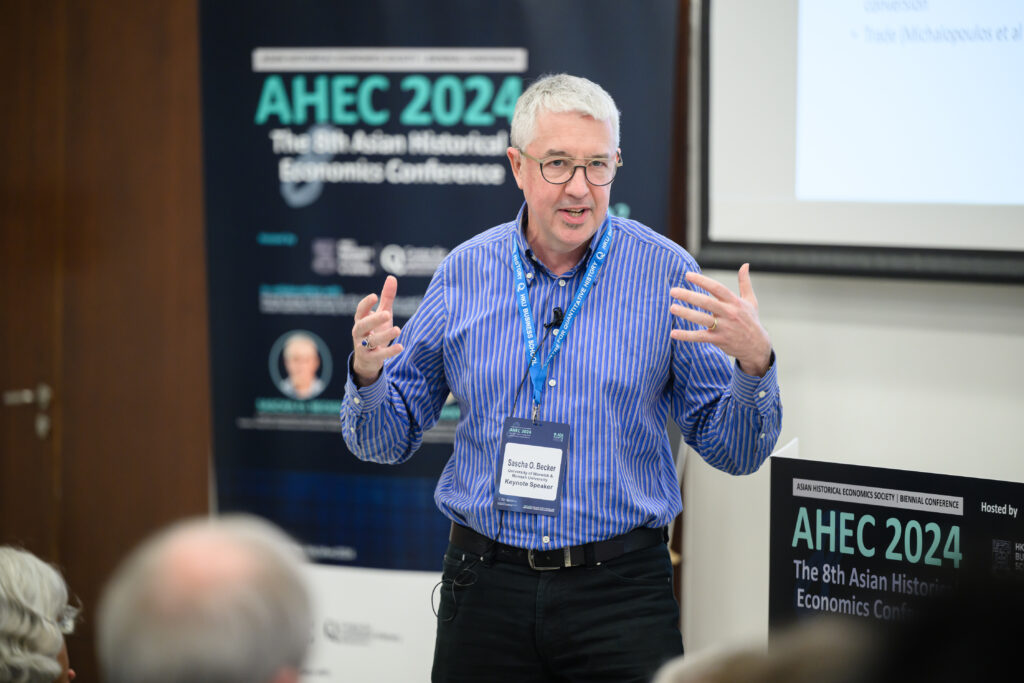
Professor Peter Turchin, a complexity scientist specialising in historical social science known as cliodynamics, leads the Seshat Databank, a vast historical database of cultural evolution. Using mathematical computational models, he analyses data spanning the past 1,000 years to elucidate the growth in scale and complexity of societies.
In his dinner speech, Professor Turchin illustrated how cultural evolution mirrors biological evolution, viewing culture as socially transmitted information akin to biological genetic material. “Culture is simply socially transmitted information and is analogous to biological evolution with DNA, RNA and some other chemical molecules. In cultural evolution, human brains are the carriers,” he said.
Employing a dynamical model rooted in the theory of cultural macroevolution, Professor Turchin and his team tested 17 potential predictor variables proxying mechanisms suggested by major theories of sociopolitical complexity, concluding that the best-supported model indicates a strong causal role played by a combination of increasing agricultural productivity and invention and adoption of military technologies.
During the Holocene the primary mode of competition between polities was warfare. “Technological evolution drove up the intensity of warfare and, therefore, inter-polity competition,” Professor Turchin said. “The key idea is that technological evolution is cumulative and drives the intensity of militarisation”
He said cultural evolution is “a very useful concept framework for societal developments” noting the significance of cavalry tactics and logistics over gunpowder in historical developments.
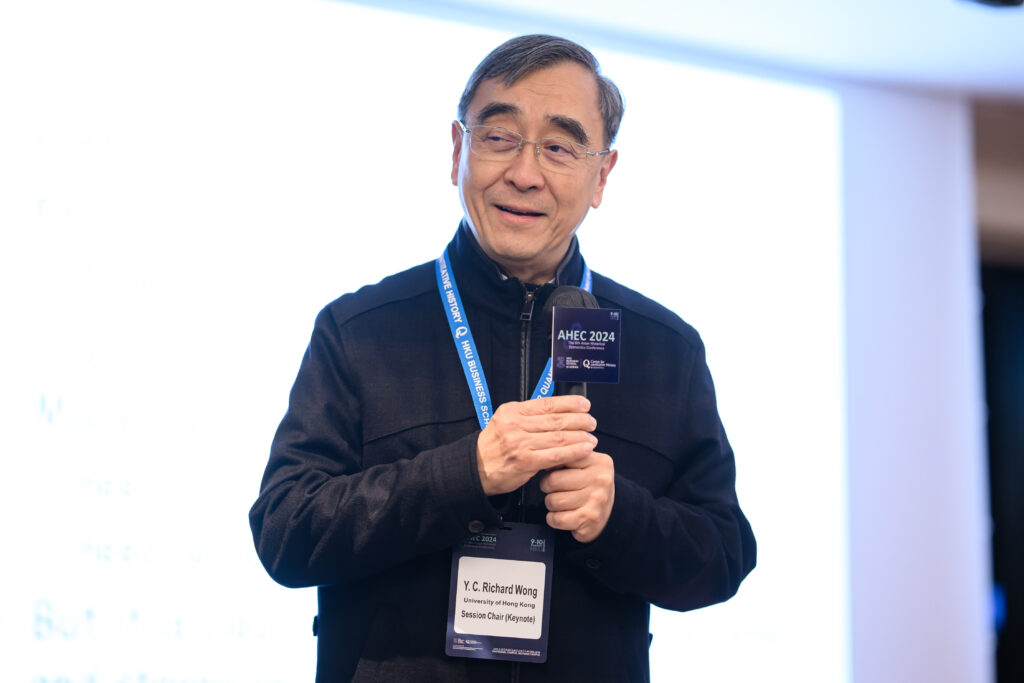
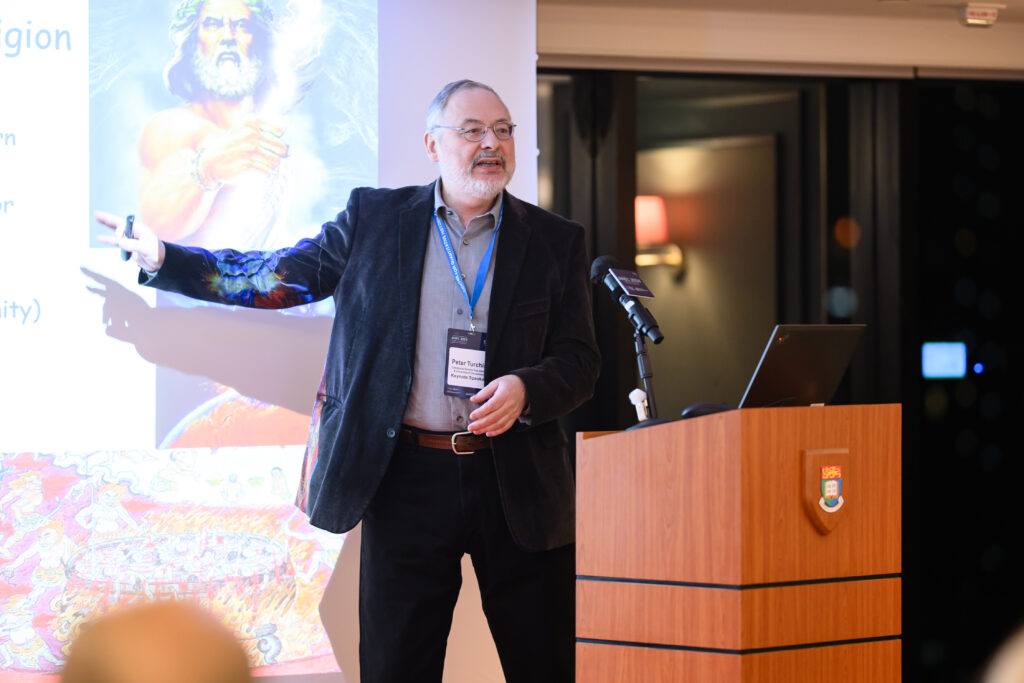
The second day kicked off with a keynote speech by Professor Joel Mokyr based on a chapter in Two Paths to Prosperity: Culture and Institutions in Europe and China, 1000-2000, by Professor Mokyr along with Avner Greif of Stanford University and Guido Tabellin of Università Bocconi.
Professor Mokyr discussed various concepts in global economic history, including the “Great Reversal,” “The Great Divergence,” explaining the rapid economic growth of the West and stagnation of China after about 1750, “Great Enrichment,” covering the rise in global gross domestic product after 1750 and “Great Bifurcation, the growing split in social and political organisations between Europe and China after 1000.
If the bulk of economic divergence in growth of income and technological progress was driven by the Industrial Revolution, what kind of causal linkages can we establish between the bifurcation of social organisations and the Industrial Revolution? Professor Mokyr argued that the principal difference between the West and China is that former developed “corporations” – not companies in the modern sense but craft guilds and scientific associations – that were more progressive and innovative than China’s clan- and kinship-based structures.
The differences between a world of nuclear families and corporations versus a world of lineages and clans were a major – and until now largely unnoticed – factor in explaining why the Industrial Revolution and subsequent economic growth occurred in Europe and not in China. He pointed out how China’s emphasis on ancestor worship stifled innovation, contrasting it with Western universities’ advancements. Mokyr noted the absence of STEM education and disruptive figures in China, underscoring the impact of educational systems on technological progress and economic growth.
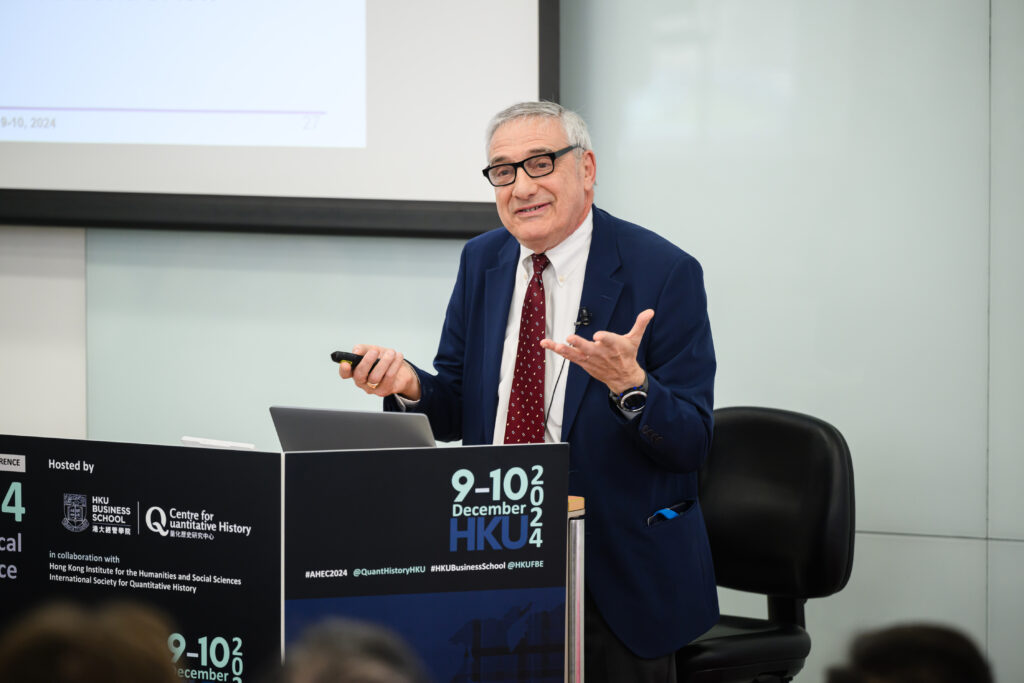
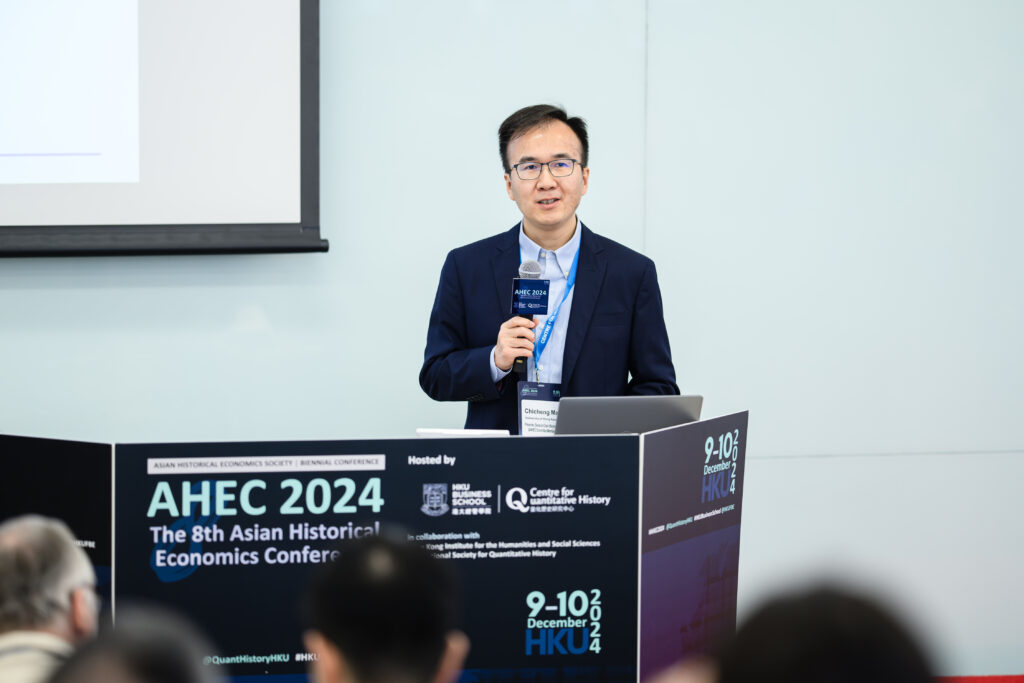
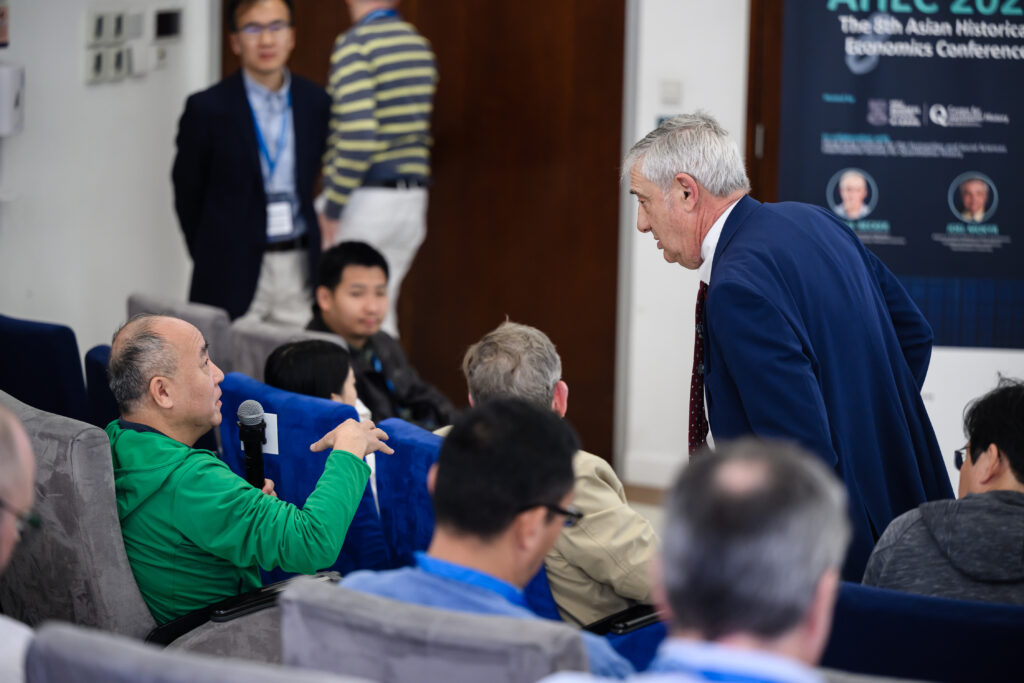
The conference concluded with a Plenary Session: “Research and Publication in Economic History”, chaired by Professor Zhiwu Chen and featuring a panel comprising Professor Sascha O. Becker, also Editor of The Economic Journal; Professor Bishnupriya Gupta of the University of Warwick and Editor of The Journal of Economic History; Professor Kris Inwood of the University of Guelph and Editor of Asia-Pacific Economic History Review; and Professor Uta Schönberg of The University of Hong Kong, who is also Co-Editor of American Economic Review.
The aim was to introduce scholars, particularly those early in their careers, to influential journal editors, so they could understand the publishing process. Chair Professor Chen expressed the desire to support and promote many scholars. making the final session focus on publishing more papers successfully. “It would make sense for the last session to be focused on the topic of how we can publish more papers and more successful papers,” said Professor Chen.
Professor Uta Schönberg highlighted rising rejection rates due to a surge in submissions, emphasising the importance of a strong abstract. She said her own rejection rate is roughly one-third but acknowledged that some editors reject nearly two-thirds of submissions. She added that first papers tend to be harshly judged by referees. “Invest in the writing,” she urged. “Think carefully about what’s new – what’s the punchline?”
Despite such grim statistics, Professor Kris Inwood urged scholars to be positive. “If you don’t submit, you can’t be accepted – take a chance,” he said. “Reviewers are trying to help you. It’s voluntary labour from someone who’s an expert on your topic, to help you improve the paper even if it doesn’t always feel that way.”
Economic history was received fairly well, the editors said. Professor Uta Schönberg said the papers in the field were rejected at a no higher rate than other topics, while Professor Bishnupriya Gupta said the number of economic history papers published was rising. “The Journal of Economic History (JEH) cares about what is the contribution of the paper to the economic history literature,” she said. JEH, she added, uses two referees who are country experts and a third who can judge how interesting the paper is to an outsider. She stressed that cover letters rarely matter. “The abstract is very useful, and the first page and a half are enough to know if it is interesting,” she added.
Professor Sascha O. Becker also stressed the importance of the writing. “Crafting a narrative starts with a good abstract and before that, a good title.” He urged scholars to “involve friends and foes in your work”, adding “what is important is feedback”.
He suggested sending the abstract, introduction, data, results and conclusions to different reviewers. “Send to a few people and you have comments on all parts of the paper.”
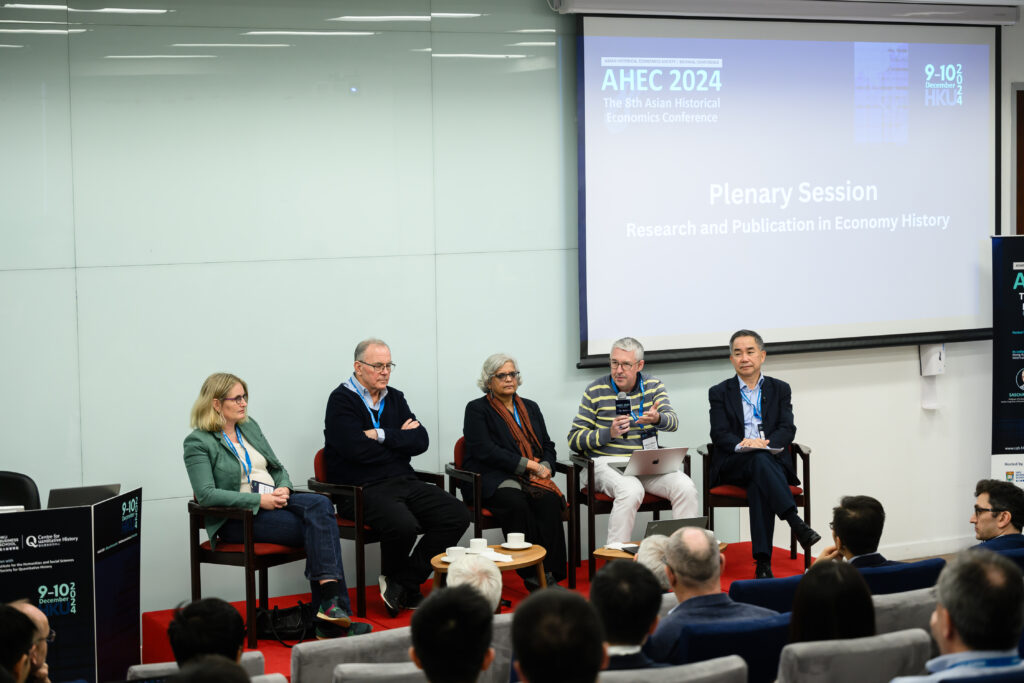
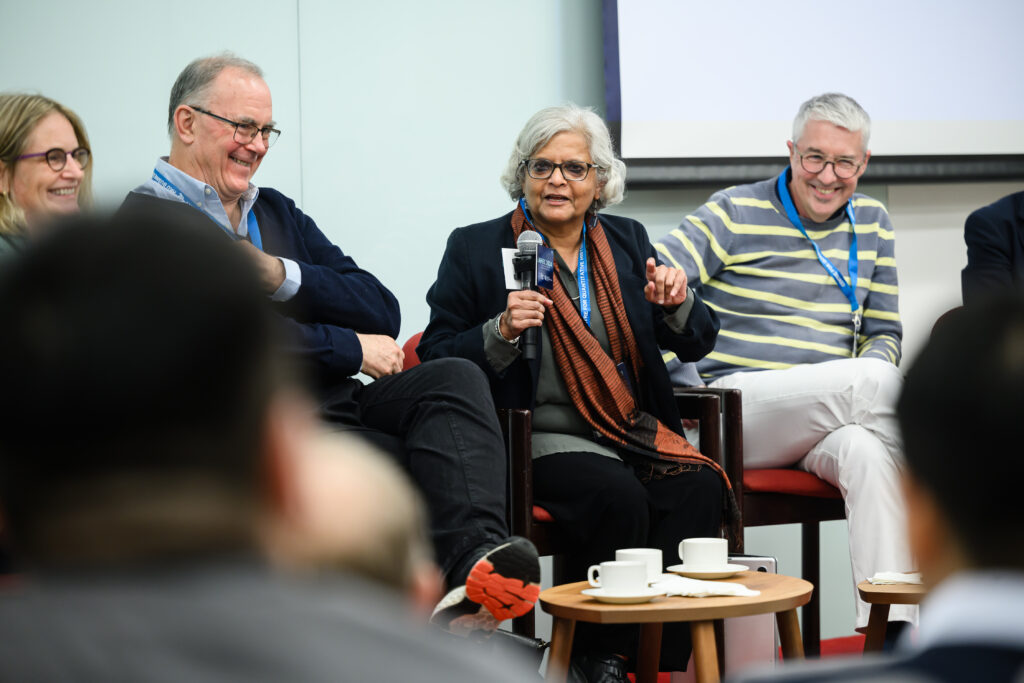
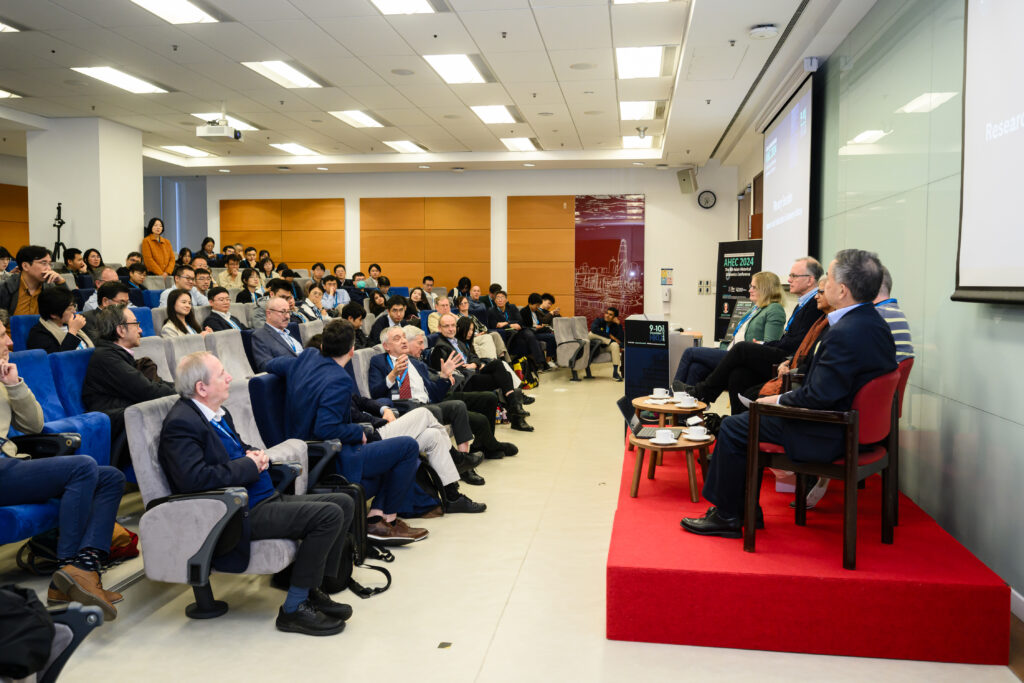
At the AHEC 2024 event, researchers working on the economic history of all regions of Asia had conversations ranged from historical context and legacies, institutions and governance, socioeconomic dynamics, to societal interactions and networks, highlighting the significance of data-driven, innovative collaborative endeavours for fostering discovery and academic discourse. As the field of economic history embraces the promise of fresh perspectives, the valuable insights gleaned from this conference offer fresh pathways for both research and data constructing initiatives. The Centre for Quantitative History eagerly anticipates further engaging in these dialogues at upcoming conferences and workshops in the future.
For more details, please visit:Retrospective: The Eighth Asian Historical Economics Conference (AHEC 2024) – Centre for Quantitative History

